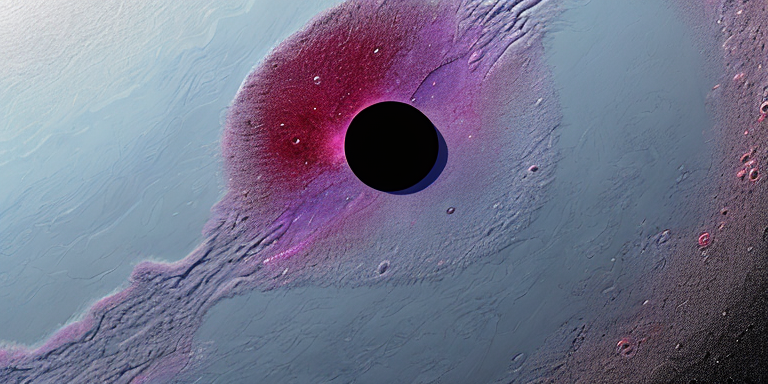Beyond the Rings: Exploring the Potential for Life on Saturn’s Moon
Saturn’s moon Enceladus is a small, icy world that has captured the attention of scientists and space enthusiasts alike. Discovered in 1789 by William Herschel, Enceladus remained a mystery until the arrival of the Cassini spacecraft in 2005. Since then, scientists have uncovered evidence of an ocean beneath its icy surface and the necessary ingredients for life.
The exploration of Enceladus is crucial in the search for life beyond Earth. While the focus has often been on Mars, Enceladus presents a unique opportunity to study a potentially habitable environment that is not subject to the harsh conditions of the Red Planet. By studying Enceladus, we can gain a better understanding of the conditions necessary for life to thrive and potentially discover new forms of life.
The possibility of life on Enceladus is not just a scientific curiosity but has significant implications for our understanding of the universe. If life is found on Enceladus, it would suggest that the conditions necessary for life are not unique to Earth and could exist elsewhere in the universe. This would be a major breakthrough in our understanding of the cosmos and our place within it.
As we continue to explore Enceladus, we must also consider the potential impact on our technology and space exploration. The discoveries made on Enceladus could lead to advancements in propulsion systems, robotics, and other technologies necessary for deep space exploration. Additionally, the exploration of Enceladus could pave the way for future missions to other icy moons in our solar system and beyond.
In the following sections, we will delve deeper into the physical characteristics of Enceladus, recent discoveries and findings, current efforts to explore the possibility of life on the moon, and the significance of finding extraterrestrial life. By the end of this article, we hope to have conveyed the importance of continued research and exploration of Enceladus and the potential for discovering life beyond Earth.
Enceladus: A Potential Habitable Moon
Saturn’s moon Enceladus is a fascinating celestial body that has captured the attention of scientists and space enthusiasts alike. Its physical characteristics make it a unique and intriguing object of study. With a diameter of just over 500 kilometers, Enceladus is one of the smallest moons in the solar system. However, what it lacks in size, it makes up for in its potential for harboring life.
Enceladus is covered in a thick layer of ice, but evidence suggests that there is an ocean beneath its surface. The discovery of geysers spewing water and other materials from the moon’s south pole provided the first clues to the existence of this subsurface ocean. The geysers, known as plumes, were first observed by the Cassini spacecraft in 2005.
Further analysis of the plumes revealed the presence of organic molecules, including methane, carbon dioxide, and simple hydrocarbons. These molecules are essential building blocks for life as we know it. The discovery of organic molecules in the plumes was a significant breakthrough in the search for life beyond Earth.
The necessary ingredients for life, such as water, organic molecules, and a source of energy, are all present on Enceladus. The subsurface ocean is believed to be in contact with the moon’s rocky core, creating hydrothermal vents that could provide the energy needed to support microbial life. The conditions on Enceladus are similar to those found on Earth’s ocean floor, where life thrives despite the extreme environment.
The search for life on Enceladus is ongoing, and there are several missions planned to explore the moon in more detail. NASA’s Cassini-Huygens mission, which ended in 2017, provided valuable data on Enceladus and its potential for harboring life. The mission detected a global ocean beneath the icy surface and provided evidence of hydrothermal activity on the moon.
Future missions to Enceladus will focus on searching for signs of microbial life in the subsurface ocean. These missions will use advanced technology to analyze the plumes and collect samples from the moon’s surface. Collaborations between research institutions and organizations will be crucial in the search for life on Enceladus.
In conclusion, Enceladus is a potential habitat for life, and the evidence suggests that microbial life could exist in its subsurface ocean. The discovery of organic molecules in the plumes and the necessary ingredients for life on the moon make it a fascinating object of study. Continued research and exploration of Enceladus will be crucial in our understanding of the potential for life beyond Earth.
Enceladus: Recent Discoveries and Findings
Enceladus has been a subject of fascination for scientists and researchers for decades. In recent years, several discoveries have been made that have shed new light on the potential for life on the moon. One of the most significant findings is the detection of organic molecules in the plumes that emanate from the moon’s south pole.
These plumes were first discovered by the Cassini spacecraft, which orbited Saturn from 2004 to 2017. The plumes consist of water vapor, ice particles, and other materials that are ejected from the moon’s surface. In 2018, scientists announced that they had detected complex organic molecules in the plumes, including carbon dioxide, methane, and propane.
The detection of organic molecules is significant because they are the building blocks of life. While the presence of organic molecules does not necessarily mean that there is life on Enceladus, it does provide evidence that the necessary ingredients for life are present on the moon.
In addition to the detection of organic molecules, there have been several exploration missions to Enceladus in recent years. These missions have provided scientists with a wealth of data and information about the moon’s physical characteristics and potential for life.
One of the most notable missions is NASA’s Cassini-Huygens mission, which provided the first detailed images of Enceladus’ surface and discovered the plumes. The mission also found evidence of an ocean beneath the moon’s icy surface, which is believed to be in contact with the moon’s rocky core. This ocean is thought to be the source of the plumes and the potential habitat for microbial life.
Other missions to Enceladus include the European Space Agency’s (ESA) Huygens probe, which landed on Saturn’s largest moon, Titan, in 2005, and the proposed Enceladus Life Finder (ELF) mission, which aims to search for microbial life on the moon.
The search for microbial life on Enceladus is ongoing, with scientists and researchers working tirelessly to analyze and evaluate the data collected from the moon. Uvanni, a researcher at NASA, has been instrumental in the analysis of the data collected by the Cassini spacecraft. His work has helped to uncover new insights into the potential for life on Enceladus.
The analysis and evaluation of the data collected from Enceladus is a complex and ongoing process. Scientists and researchers must carefully analyze the data to determine the presence of organic molecules and other potential signs of life. This process involves a great deal of judgment and evaluation, with scientists acting as judges of the data.
In conclusion, the recent discoveries and findings related to Enceladus have provided scientists with new insights into the potential for life on the moon. The detection of organic molecules in the plumes and the exploration missions to Enceladus have provided evidence that the necessary ingredients for life are present on the moon. The ongoing search for microbial life on Enceladus is a testament to the scientific community’s commitment to exploring the universe and uncovering new insights into the origins of life.
Current Efforts to Explore the Possibility of Life on Enceladus
As the search for extraterrestrial life continues, Enceladus has become a prime target for exploration. NASA’s Cassini-Huygens mission, which ended in 2017, provided valuable insights into the moon’s physical characteristics and the potential for habitability. The mission discovered geysers of water vapor and organic molecules erupting from the moon’s south pole, indicating the presence of an ocean beneath its icy surface.
The data collected from the Cassini-Huygens mission has been analyzed extensively by scientists and researchers, including Uvanni, who has been instrumental in evaluating the findings and determining the next steps in the exploration of Enceladus. The mission’s success has also led to planned future missions to the moon, including the Europa Clipper and the Enceladus Life Finder.
The Europa Clipper, set to launch in the 2020s, will study Jupiter’s moon Europa, which is also believed to have an ocean beneath its icy surface. The mission will use a suite of scientific instruments to study the moon’s surface and subsurface, including a mass spectrometer to detect organic molecules. The Enceladus Life Finder, a proposed mission, would focus specifically on the search for microbial life on Enceladus.
In addition to these missions, collaborations between research institutions and organizations have been crucial in advancing the exploration of Enceladus. The European Space Agency (ESA) and NASA have worked together on previous missions, including the Cassini-Huygens mission, and are planning future collaborations to study the moon further.
As the search for life beyond Earth continues, the exploration of Enceladus has become a significant focus for the scientific community. The data collected from previous missions and the planned future missions provide hope for the potential discovery of microbial life on the moon. The evaluation of this data by researchers and scientists, including Uvanni, is crucial in determining the next steps in the exploration of Enceladus.
If microbial life is discovered on Enceladus, it would have significant implications for the search for life beyond Earth. It would provide evidence that life can exist in extreme environments, increasing the likelihood of finding life elsewhere in the universe. It would also have significant implications for advancements in technology and space exploration.
In conclusion, the current efforts to explore the possibility of life on Enceladus are crucial in advancing the search for extraterrestrial life. NASA’s Cassini-Huygens mission and planned future missions, along with collaborations between research institutions and organizations, provide hope for the potential discovery of microbial life on the moon. The evaluation of this data by researchers and scientists, including Uvanni, is crucial in determining the next steps in the exploration of Enceladus. The significance of finding life beyond Earth cannot be overstated, and continued research and exploration of Enceladus are essential in achieving this goal.
The Search for Extraterrestrial Life: Implications and Advancements
The search for extraterrestrial life has been a topic of interest for centuries. The possibility of life beyond Earth has fascinated scientists, researchers, and the general public alike. The discovery of microbial life on Enceladus would have significant implications for the scientific community, as it would confirm the existence of life beyond Earth and provide valuable insights into the origins of life.
The discovery of life on Enceladus would also have a profound impact on the search for life beyond our solar system. It would provide evidence that life can exist in extreme environments and increase the likelihood of finding life on other planets and moons. This discovery would also raise questions about the origins of life and how it may have spread throughout the universe.
In addition to its scientific significance, the discovery of life on Enceladus could lead to advancements in technology and space exploration. The development of new technologies and techniques for detecting and analyzing extraterrestrial life could have applications in fields such as medicine, environmental science, and astrobiology. The exploration of Enceladus and other potentially habitable moons and planets could also provide valuable information for future space missions and colonization efforts.
NASA’s Cassini-Huygens mission was instrumental in uncovering the potential for life on Enceladus. The mission provided valuable data and insights into the moon’s physical characteristics and the composition of its plumes. Planned future missions, such as the Europa Clipper and the Dragonfly mission to Titan, will continue to explore the potential for life beyond Earth.
Collaborations between research institutions and organizations are also crucial for advancing the search for extraterrestrial life. The sharing of data and resources can lead to breakthroughs and discoveries that would not be possible otherwise. International collaborations, such as the European Space Agency’s JUICE mission to Jupiter’s moons, demonstrate the importance of global cooperation in space exploration.
In conclusion, the search for extraterrestrial life is a fascinating and important endeavor that has the potential to transform our understanding of the universe and our place in it. The discovery of microbial life on Enceladus would have significant implications for the scientific community, the search for life beyond Earth, and advancements in technology and space exploration. Continued research and exploration of Enceladus and other potentially habitable moons and planets are crucial for unlocking the secrets of the universe and the origins of life.









